Sunday Summaries 31/01/2016: AC: Syndicate & The Witness
By Mento 1 Comments
So ends another January. This month's been a real bummer for those few of us who are British celebrities: androgynous starman David Bowie, scenery-gobbling screen villain Alan Rickman and, most recently, genial Irish broadcaster and once our gently mocking window into the Eurovision Song Contest, Sir Terry Wogan. All from cancer too, as if we need any more reason to eliminate it from the world.
Still, it hasn't been such a bummer elsewhere in the world. The Venture Bros begins its sixth season tonight and I've started getting into Gravity Falls which - despite being clearly for kids, what with it airing as a Disney Channel Original - still manages to make me laugh a couple times per episode. It also feels like the closest thing we'll get to a Psychonauts cartoon; though given that a sequel's now on its way, perhaps that's a "never say never" as far as that idea is concerned. I've also been neck-deep in Japanese buffoonery this month, as busy translators have finished the first three hours of the Gaki no Tsukai "No Laughing" Batsu Game for 2015/2016, as well as an enormous two-hour Vietnam Special for everyone's favorite retro gaming show, GameCenter CX. Even here on Giant Bomb we've been introduced to something very exciting this January: Guest Columns from freelance writers! I now have a new brass ring to chase after, though as far as I can tell the competition is fierce indeed. Like Mr. Burns bringing in his Major League ringers in that one episode of The Simpsons, me and Wonderbat are going to have to try our darndest to keep up.
New Games!
Like last week, we're looking at one very hotly anticipated new game and a whole bunch of minor but possibly no less interesting releases.
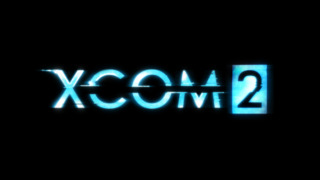
The big game this week is XCOM 2: Stupid Sexy UFO-Landers. XCOM: Enemy Unknown was, as I probably don't need to remind everyone, 2012's Game of the Year for Giant Bomb. I think it's fair to say that expectations are high for this sequel, and I'm personally hoping they fix how tedious the late-game could get as the fun tech-tree stuff dried up and all you had left was missions through colossal crashed starships that took forty-five minutes a pop. That game was built for replayability with its campaigns, like a Civilization, but just getting to the end once was enough for me. XCOM 2 aims to switch things up a little, what with the Earthlings' occupation in full effect, so it remains to be seen how this new one will rate.
Besides that, we have a lot of pre-existing Indie games like Best Music runner-up Crypt of the NecroDancer and Not a Hero coming to PS4 - building that list! - and perhaps most exciting of all from a Quick Look fan's perspective is the arrival of American Truck Simulator on Steam. Given the lorry-flipping capers of its European equivalent's QL, I'm hoping this leads to an unforgettable Vinnyventure across America's remote highways.
Wiki!
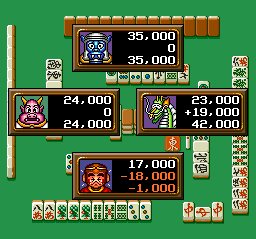
Another big wiki push this week, as I ticked off another seventeen PC Engine games from my list. That just leaves the fifteen games that were released for the PC Engine in December 1990, though it looks like most of those don't have pages yet. Conversely, of the seventeen covered this week, only five required new pages: Mahjong Gokuu Special, another mahjong game featuring characters from the ancient Chinese novel (and what I can only assume is a public domain source) Journey to the West; F1 Circus, the first in a Drew-bait top-down Formula 1 franchise that I've already bulked up by four pages via its many iterations on the Super Famicom; Sekigahara, yet another Sengoku era strategy game; Final Blaster, which seemed like a half-decent shoot 'em up for a console library hardly lacking in the things; and the bizarre sports game Kickball, which is just baseball except you kick pitches instead of hitting them with bats. That its characters are all squids, seals, kappas and characters from the Shubibinman franchise is perhaps only the slightly less odd part.
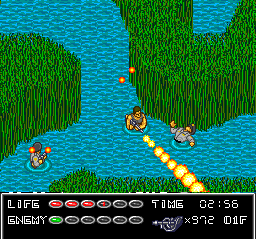
In terms of games people may have heard of, we have: that terrible Die Hard licensed game which Jeff played during a Vinnyvania once that starts you off in a Vietnamese jungle for whatever reason; Operation Wolf, which at least had an excuse for shooting bad guys in a jungle given its Rambo-esque leanings; After Burner II, which didn't suffer too badly when getting ported to the PC Engine, though I dare say the Arcade original is still the version to go for; and the weird Pac-Man-style maze runner that is SunSoft's PC Engine Batman licensed game based on the 1989 Tim Burton movie, so very different from the Genesis and NES versions.
Right now I'm trying to determine if we shouldn't fold Darius+, Darius Plus (which is subtly different from Darius+) and Darius Alpha into the core Darius page. They're all home console ports based on the same "fish and ships" 1986 Arcade shoot 'em up from Taito, but each one pretended they had something new to offer besides a scaled down (so to speak) take on the original.
(One of my pitches to Austin, because of course I'm going to try to sell out, was to cover PC Engine games in greater detail as a regular feature not unlike that TurboMento/Octurbo series from a little while back. Would anyone be interested in that? It's sometimes hard to get a good read for how much the Giant Bomb visitors are into the older, historical video game talk.)
Assassin's Creed Syndicate
Once again, my allotment of Assassin's Creed Syndicate talk was all but maxed out with this week's The Completionist's Complaint on how little the Assassin's Creed franchise seems to care for the component of its user base that feels compelled to 100% each open-world game they play. Some open-world games are more considerate of these poor souls, easing up on the amount of treasure hunting and side-activities or at least making them worthwhile in some way via some sort of character progression, though the majority seem to just scatter inessential collectibles around their expansive worlds and call it a day.
I will say that now I've completed Assassin's Creed Syndicate the core story and how it develops is actually really good. I particularly appreciated when the game did some fun stuff with the instability of the makeshift Animus equivalent the Assassins use, and with Juno: the malevolent precursor who managed to turn herself into a digital being before her species was wiped out, and who continues showing up inside simulations to either taunt or attempt to recruit the faceless hacker player character. The game manages to squeeze in a lot of important historical characters who could feasibly be wandering around London in the late 19th century, but the most famous non-Royal Englishman of them all wouldn't have been able to make an appearance without the game's cheeky little time skip holiday to the early 20th century and World War 1.
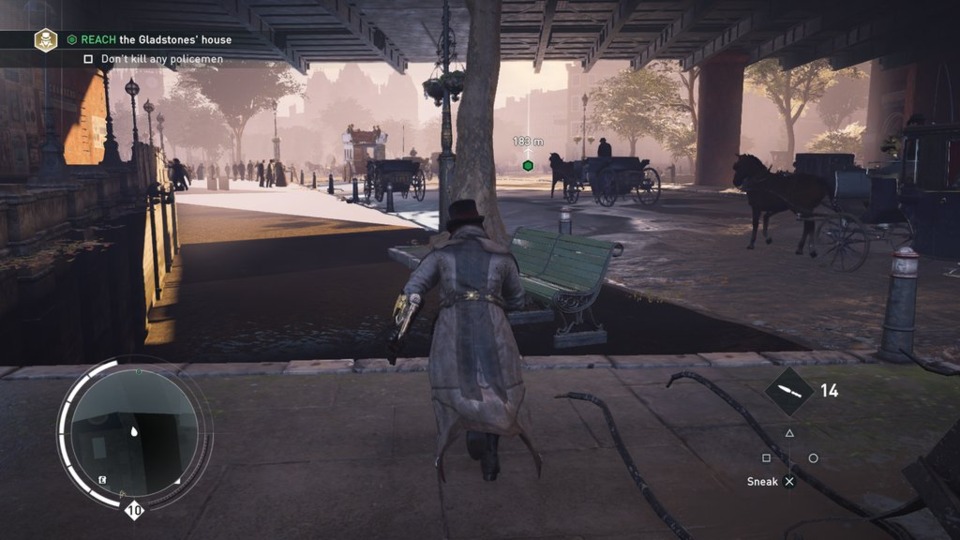
I actually like a lot of the Templar characters this time around as well. Generally speaking, the most you tend to see of any given Templar stooge is him yelling at some poor underling before wandering off and becoming a glowy golden target for your next big assassination. That was certainly the case for the first few Templar targets in the game, who don't really give much of an impression beyond being a second-rate Dickens villain who is a jerk to child laborers (yep, there were a lot of those back then) or some other put-upon peon working themselves to the bone to keep the British Empire's industrial revolution marching along. The game goes a little deeper with the later ones, including the omnibus kingpin, the idiot nobleman general who was partly responsible for the Charge of the Light Brigade, and the mercurial showman leader of the Blighters: the game's red-garbed rival gang. The latter in particular felt like a Bill Nighy villain come to life. Obviously, I can't go into too much detail on any of these, because for as unimpressed as I was with most of the game I don't feel like spoiling the best parts for anyone yet to try it.
My advice? Don't play this if you can't play open-world games without trying to get 100%. In fact, there's probably plenty of better open-world games in terms of combat and character movement too, as the Assassin's Creed series really hasn't improved either facet for years and has thereby given everyone else a chance to catch up and surpass them with their own takes on freerunning and combo-/counter-heavy group fighting. Try to avoid fretting about the hundreds of collectibles, or the repetitive territory takeover missions, or those full synchronization bonuses, because none of them really add anything to the game. If you can do that, then Assassin's Creed Syndicate is absolutely worth playing. I think it gets a lot of its story-based stuff right, like the core plot with the twins and the side-missions with various historical figures, and if you breeze through all that in some ten hours or so I'd say you'd have gotten your money's worth.
The Witness
It's with some degree of regret that while I was fortunate to receive a gift copy of The Witness on Steam, I presently have no way to play it. Jonathan Blow's new puzzle game launched to rapturous acclaim last week, ensorcelling players with its increasingly devious maze puzzles and attractive landscapes. It's due to the latter, however, that I've been unable to play the game. Curious, given that The Witness will soon hit the not-particularly-cutting-edge iPad in due time, I looked into how I could run something like Grow Home or Gone Home without much issue on this low-end PC but couldn't manage a game full of friggin' line puzzles.
It seems that the game isn't built on Unity or UnrealEd, as I assumed when I first started playing, but some in-house engine that Blow and his fellow developers created themselves. This engine loads the entire island of the game as one contiguous zone rather than one separated by hidden loading screens - elevators are the usual culprit, though they can often be just long empty corridors that load in the new areas surreptitiously - and other such partitions. As such, though I didn't have any trouble with the first few areas - the opening keep, the house overlooking the sea, and the small bluff that carried on from that with the simultaneous line puzzles - as soon as I started heading inland towards the village or that big factory-looking place on the sands, the framerate just tanked. Unless I was walking around looking at my feet, preventing the game from drawing in any distant objects, the game would essentially freeze for several seconds at a time. I can weather the usual Blighttown-esque problems with unreliable framerates that I tend to get with some of the more technologically extensive Indie games (new AAA games are a complete non-starter, of course), but this was genuinely unplayable.
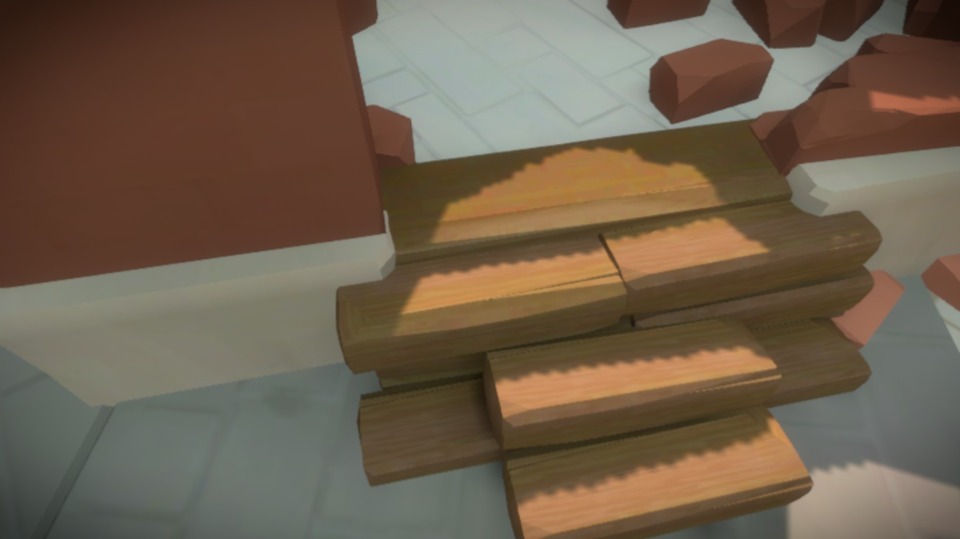
I offered to return to the game to my friend, but he suggested hanging onto it in case Blow and his team come out with a way to optimize the game a little better for us frugal folk with systems built before the destruction of the Berlin Wall. So that's where The Witness is presently at for me: unplayable, but hopefully not for long. Maybe when they get that iOS version out with all the necessary technical shortcuts, they'll make the PC version a little more manageable the same way as well. It's certainly been a humbling few days.
Still, I did manage to play a bit of The Witness, so here goes my early impressions: I think it's a really neat game, though the parts of it that want to be more like Myst are where it loses me. I get the whole ambience-boosting nature of having everything be enigmatic and rudderless, and while I appreciate that The Witness never holds my hand through a lot of its puzzles, it's getting around that I find tediously annoying. Obviously, a lot of that was due to the game's framerate crapping out in the busier areas, but I had zero sense of where to go after the seaside cliff puzzles and each new area I could find had nothing to offer but advanced puzzles I clearly needed some extra tidbit of knowledge to solve. Without spoiling anything, there was a couple new markings on the puzzles I'd intuited thanks to the game's occasional rows of "tutorial" puzzles that were occasionally introduced along with a new puzzle element, but they didn't seem to apply to some more difficult instances of the same puzzles and these tutorials had completely dried up at the point I was at. (For those who have finished the game, or got sufficiently far: The black and white boxes on the grids, which I figured out needed a line to separate every instance where two boxes of opposite colors would meet.) I'd have loved more time to hit my head against them though, so I don't think I'll count that as a downside.
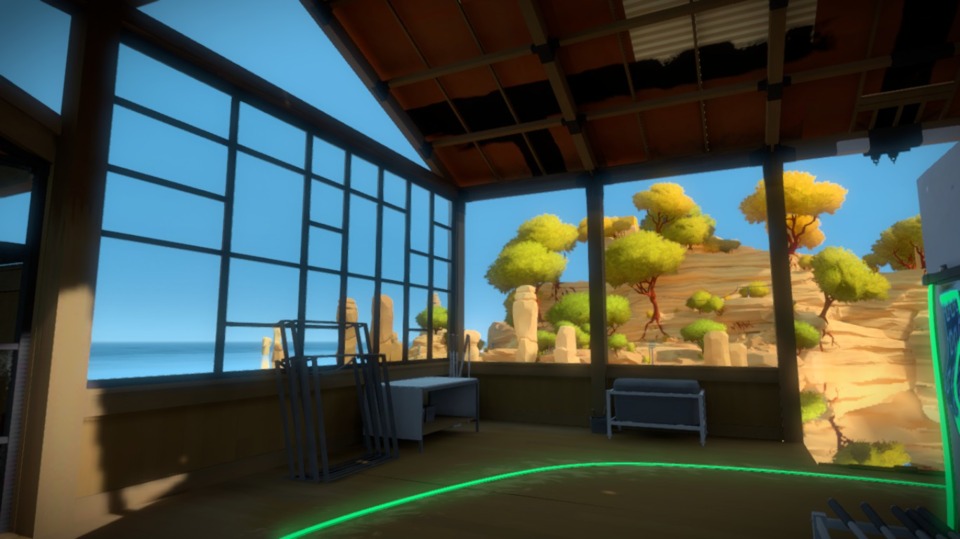
What I would have preferred though, and this is probably my completionist persona coming through again, was some sense of the progress I was making. I activated a machine at the end of one series of puzzles, and if there was a way to tell how many of these machines there were or a way to know how many I'd activated and had left to go - if these machines indeed have anything to do with reaching the conclusion of the game, though the game wouldn't need to tell me what they were for until the end if it preferred to maintain the mystery - that would've been great. I think back to Fez, which was the last game to exhibit this specific brand of "the world's a big ol' enigma, so keep a notepad nearby to fill with your thoughts as you solve everything" mystique, and even that had status and map pages that told you where in the world you could try exploring next, and whether or not they still had puzzles there to solve. It doesn't even have to be some pause screen page, if Blow and his team are that adamant about reducing the amount of GUI/HUD the player sees, but perhaps some central hub location on the island that indicates areas that have mysteries left to deduce by pointing in their general direction with an unlit beacon to show that you haven't resolved all its puzzles yet. Maybe that place exists and I just haven't gotten far enough into the game, but I'm definitely more invested in the puzzles and the slow creep of learning how each new mechanic/feature works than I am in wandering around a barren island looking for something to do. I've got Dear Esther for that - and for all that game's flaws, at least you knew which direction to head.
That ought to do it for another Sunday Summaries. Next week will include the emergency "Comic Commish" game, which I kinda didn't complete in time for this month, and then after that I'm launching into Bloodborne to see if I can't get all caught up with FromSoftware's Souls series before Dark Souls III shows up this March. I'm also hoping to be done with the PC Engine 1990 Wiki Project by Friday, which will eventually see a similar write-up to this 1989 one. Until then, everyone.
